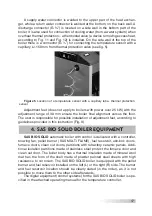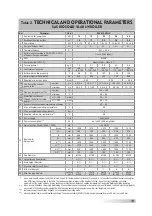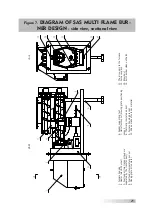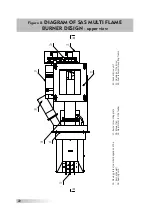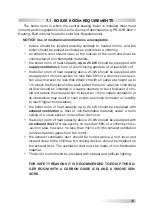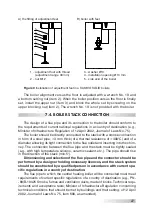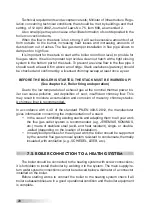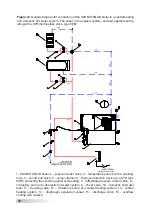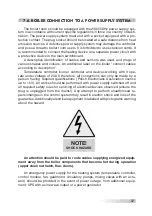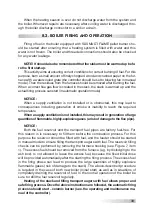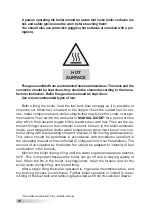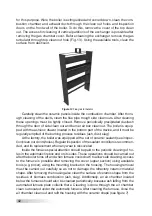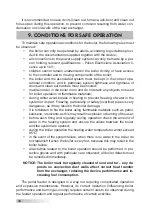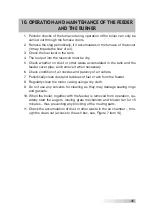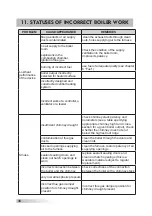
31
The thermal protection against overheating can only be installed by a qu-
alified person. A precondition for an efficient function of the boiler protection
against overheating is a correctly constructed system conforming to current
regulations, and in particular, meeting the requirements concerning capacity,
equipment, location of an expansion vessel in an open vented system, mini-
mum diameters, routing and connection systems for protection pipes, secu-
ring protective devices against freezing, and venting of water based heating
system.
It is recommended for the valve protecting against overheating (item 8)
to be checked for its correct function by a qualified person once a year. The
test is performing manually by pressing a red button that opens flow through
a valve. Press the red button at least once a year to remove contaminations
and clean the sump strainer on the cooling water inlet. A condition of the
temperature sensor (item 2) surface should be monitored because precipita-
ting deposits may affect temperature indications and prolong the time needed
to open a valve protecting against overheating. For correct operation of the
thermostat valve markings showing a correct flow direction on the valve body
should be observed.
The presented diagrams showing the SAS boiler connection to the open
vented central heating and the domestic hot water systems are an example of
a possible solution. The system layout and technical parameters should be
selected by a designer holding relevant licences, and the system should be
constructed by a qualified person.
7.5.2. SEALED SYSTEM
It is possible to connect the SAS BIO SOLID boiler equipped with a factory in-
stalled air supply system and a controller, to a sealed system, provided a pressure
relief valve, a diaphragm expansion vessel, equipment for control and measure-
ments (manometer, thermometer, etc.), and devices for removing excess heat – a
thermal protection valve, e.g.SYR type 5067, are installed and requirements for the
boiler operation, particularly, recommended operation temperature of 60°C – 80°C,
maximum acceptable temperature of 85°C, and maximum acceptable working
pressure of 1.5 bar, are met.

